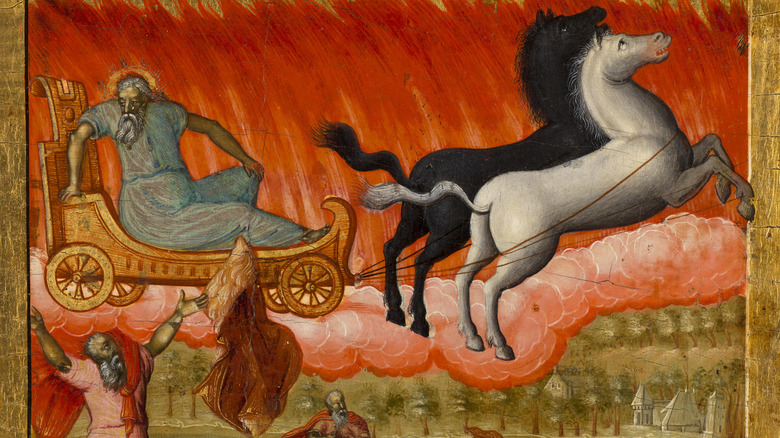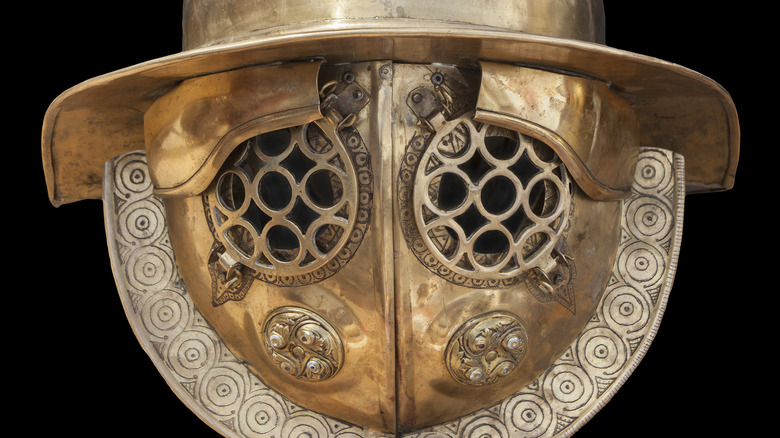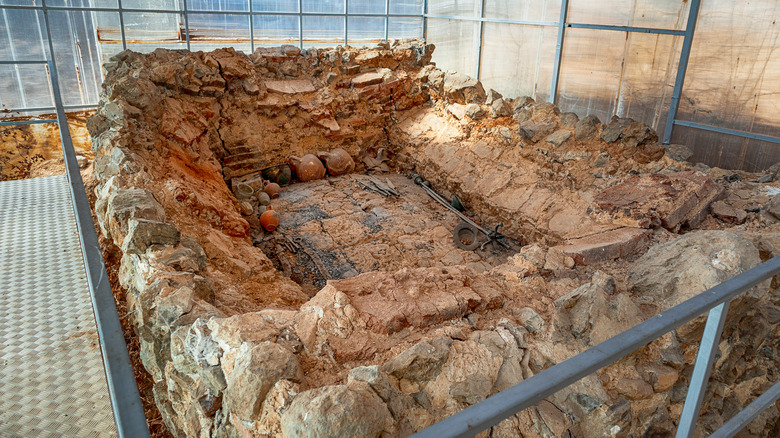The 2,000 Year Old Thracian Chariot Found With The Bones Of A Nobleman
It's not all about the money, because you can't take it with you in death. But you can take your bronze-plated chariot, horses, pigs, dogs and sheep if you'd like (via Live Science). At least in ancient Bulgaria you could. You may have seen the photo of a grand chariot, uncovered by archaeologists at a dig site, complete with both human, horse and dog bones. Well, this historical finding is the remnants of a rich burial tradition that's been buried in time, just like the chariot.
It tells the story of a time when grieving was laced with offerings to the gods, and your level of nobility determined what you got to bring with you to the afterlife. This dig site was likely the burial place of a wealthy nobleman, but others like it are rarely studied, as they're often looted first. This finding was a breakthrough for archaeological science.
The Dig Site
In 2008 and 2009, Veselin Ignatov, an archaeologist from the Istoricheski Muzej Nova Zagora Museum in Bulgaria, led a team to dig out this 2,000-year-old chariot (via Live Science). During the excavations of the funerary mound, which was likely a Thracian tomb (via Boston.com), the team noticed the wooden chariot was decorated with muddied scenes from Thracian mythology. Near the chariot was a man dressed in armor, with gold coins, gold rings, a silver cup with a design of the Greek god Eros (like Rome's Cupid), as well as wooden and leather objects, which resembled horse harnesses and tools.
And of course, with the horseback riding-related tools, were two horses and a dog. Thracians were an Indo-European nomadic people who lived around 5,000 years ago, and were later taken over by the Romans before being assimilated with the Slavs. Before that, they had a rich history, and even richer burial traditions. Chariot burials were common in the region that is now known as Bulgaria, and they were usually reserved for nobility and royalty.
Chariot Burials
This particular chariot found in Bulgaria was well preserved, and about four feet in diameter (via Boston.com). Usually, by the time archaeologists find such excavations, they are destroyed by looters. Chariot burials were popular in Bulgaria — often burying their subjects with priceless goods — so grave robbers have grown wise (via Live Science). It's a constant race between archaeologists and criminals to get to the goods first.
At the time of the burial, the departed's horses were often slaughtered in mourning, and in sacrifice to the Gods. Other animals were commonly sacrificed as well, like dogs, sheep, pigs and deer, bringing sense to why dog remains were found at the excavation site. Other items, like the jewelry noted above and libations like wine, were also often sent with the deceased to the afterlife.
While the Thracians may have been defeated and absorbed by later societies, who stole their traditions (like Romans taking to chariot burials themselves), discoveries like these can preserve the culture for centuries to come... as long as grave robbers don't get to them first.


